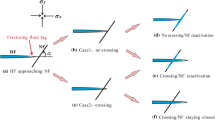Abstract
Employing a finite element computing scheme implemented onto the Leonov viscoelastic model, we newly describe various kinds of melt fracture for the extrudate exiting from the Poiseuille flow in the contraction channel with wall slip ignored. Four types such as sharkskin, gross melt fracture, slow surface undulation, and ripples are found depending on the flow conditions like the flow rate and liquid property, and they are expressed as 2D elastic instability in this inertialess flow regime. Even though not considered, the effect of die wall slip has to be included in the realistic modeling of melt fracture. However, here, we make the first attempt to analyzing extrudate instability in terms of purely fluid mechanical factors. As a result, each type of melt fracture is verified to result from the different origin, and thus, geometric singularities and streamline vortices at contraction corner and die exit determine this type of extrudate distortion.










Similar content being viewed by others
References
Adewale KEP, Leonov AI (1993) On modeling spurt flows of polymers. J Non-Newtonian Fluid Mech 49:133–138
Afonso AM, Oliveira PH, Pinho FT, Alves MA (2011) Dynamics of high-Deborah-number entry flows: a numerical study. J Fluid Mech 677:272–304
Boger DV, Walters K (1993) Rheological phenomena in focus. Elsevier, Amsterdam
Brasseur E, Fyrillas MM, Georgiou GC, Crochet MJ (1998) The time dependent extrudate-swell problem of an Oldroyd-B fluid with slip along the wall. J Rheol 42:549–566
Brooks AN, Hughes TJR (1982) Streamline upwind/Petrov-Galerkin formulations for convection dominated flows with particular emphasis on the incompressible Navier-Stokes equations. Comput Methods Appl Mech Eng 32:199–259
Chiba KT, Sakatani T, Nakamura K (1990) Anomalous flow patterns in viscoelastic entry flow through a planar contraction. J Non-Newtonian Fluid Mech 36:193–203
Choi YJ, Hulsen MA (2011) Simulation of extrudate swell using an extended finite element method. Korea-Aust Rheol J 23:147–154
Crochet MJ, Keunings R (1982) Finite element analysis of die-swell of a highly elastic fluid. J Non-Newtonian Fluid Mech 10:339–356
De Paulo GS, Tomé MF, McKee S (2007) A marker-and-cell approach to viscoelastic free surface flows using the PTT model. J Non-Newtonian Fluid Mech 147:149–174
Fattal R, Kupferman R (2004) Constitutive laws for the matrix-logarithm of the conformation tensor. J Non-Newtonian Fluid Mech 123:281–285
Garvey BS, Whitlock MH, Freese JA (1942) Processing characteristics of synthetic tire rubber. Ind Eng Chem 34:1309–1312
Guénette R, Fortin M (1995) A new mixed finite element method for computing viscoelastic flows. J Non-Newtonian Fluid Mech 60:27–52
Inn YW, Fischer RJ, Shaw MT (1998) Visual observation of development of sharkskin melt fracture in polybutadiene extrusion. Rheol Acta 37:573–582
Kissi NE, Leger L, Piau JM, Mezghani A (1994) Effect of surface properties on polymer melt slip and extrusion defects. J Non-Newtonian Fluid Mech 52:249–261
Kissi NE, Piau JM, Toussaint F (1997) Sharkskin and cracking of polymer melt extrudates. J Non-Newtonian Fluid Mech 68:271–290
Koopmans R, Doelder JD, Molenaar J (2010) Polymer melt fracture. CRC Press, Boca Raton
Kwon Y (2012) Numerical description of elastic flow instability and its dependence on liquid viscoelasticity in planar contraction. J Rheol 56:1335–1362
Kwon Y (2014) Numerical aspects in modeling high Deborah number flow and elastic instability. J Comput Phys 265:128–144
Kwon Y, Leonov AI (1995) Stability constraints in the formulation of viscoelastic constitutive equations. J Non-Newtonian Fluid Mech 58:25–46
Larson RG (1992) Instabilities in viscoelastic flows. Rheol Acta 31:213–263
Leonov AI (1976) Nonequilibrium thermodynamics and rheology of viscoelastic polymer media. Rheol Acta 15:85–98
Leonov AI, Prokunin AN (1994) Nonlinear phenomena in flows of viscoelastic polymer fluids. chapt.11. Chapman & Hall, New York
McKinley GH, Armstrong RC, Brown RA (1993) The wake instability in viscoelastic flow past confined circular cylinders. Philos Trans R Soc London Ser A 344:265–304
Meulenbroek B, Storm C, Bertola V, Wagner C, Bonn D, van Saarloos W (2003) Intrinsic route to melt fracture in polymer extrusion: a weakly nonlinear subcritical instability of viscoelastic Poiseuille flow. Phys Rev Lett 90:024502
Murnaghan FD (1937) Finite deformations of elastic solids. Amer J Math 59:235–260
Pakdel P, McKinley GH (1996) Elastic instability and curved streamlines. Phys Rev Lett 77:2459–2462
Pan L, Morozov A, Wagner C, Arratia PE (2013) Nonlinear elastic instability in channel flows at low Reynolds numbers. Phys Rev Lett 110:174502
Piau JM, Kiss NE, Tremblay B (1990) Influence of upstream instabilities and wall slip on melt fracture and sharkskin phenomena during silicones extrusion through orifice dies. J Non-Newtonian Fluid Mech 34:145–180
Piau JM, Nigen S, Kissi NE (2000) Effect of die entrance filtering on mitigation of upstream instability during extrusion of polymer melts. J Non-Newtonian Fluid Mech 91:37–57
Poole RJ, Alves MA, Oliveira PJ (2007) Purely elastic flow asymmetries. Phys Rev Lett 99:164503
Ramamurthy AV (1986) Wall slip in viscous fluids and influence of materials of construction. J Rheol 30:337–357
Russo G, Phillips TN (2011) Spectral element predictions of die-swell for Oldroyd-B fluids. Comput Fluids 43:107–118
Sahin M (2013) Parallel large-scale numerical simulations of purely-elastic instabilities behind a confined circular cylinder in a rectangular channel. J Non-Newtonian Fluid Mech 195:46–56
Simhambhatla M, Leonov AI (1995) On the rheological modeling of viscoelastic polymer liquids by stable constitutive equations. Rheol Acta 34:259–273
Tomé M, Mangiavacchi N, Cuminato JA, Castelo A, McKee S (2002) A finite difference technique for simulating unsteady viscoelastic free surface flows. J Non-Newtonian Fluid Mech 106:61–106
Tomé M, Castelo A, Afonso AM, Alves MA, Pinho FT (2012) Application of the log-conformation tensor to three-dimensional time-dependent free surface flows. J Non-Newtonian Fluid Mech 175–176:44–54
Tordella JP (1956) Fracture in the extrusion of amorphous polymer through capillaries. J Appl Phys 27:454–458
Acknowledgments
The research was supported by Basic Science Research Program through the National Research Foundation of Korea (NRF) funded by the Ministry of Education, Science and Technology (2010-0009654).
Author information
Authors and Affiliations
Corresponding author
Electronic supplementary material
Below is the link to the electronic supplementary material.
(MPG 32178 kb)
(MPG 24030 kb)
(MPG 12034 kb)
(MPG 17886 kb)
(MPG 20118 kb)
(MP4 15417 kb)
Rights and permissions
About this article
Cite this article
Kwon, Y. Melt fracture modeled as 2D elastic flow instability. Rheol Acta 54, 445–453 (2015). https://doi.org/10.1007/s00397-015-0844-0
Received:
Revised:
Accepted:
Published:
Issue Date:
DOI: https://doi.org/10.1007/s00397-015-0844-0




